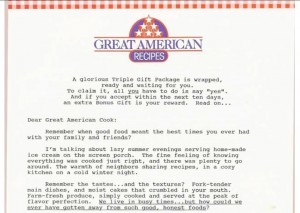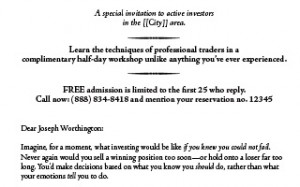Longtime readers may recall that I started my career as a writer, but not a seller, of screenplays. A special frustration of this status is that a screenplay is not a freestanding creative work. It’s not “done” until somebody makes it into a movie.
It used to be the same with the vast majority of book manuscripts which were lovingly and carefully written and then launched into an unappreciative world. If a publisher turned you down you could print it yourself at a vanity press but the distribution list was limited to friends and relations.
The phenomenon of epublishing has changed this scenario in a major way. Now anyone writing a book can indeed expect that it will be published and distributed if you’re willing to pay the modest sum to register it on Kindle, Nook and similar channels. The market may or may not love you, but you can now say to anyone who crosses your path, “I’ve got a book!”
I have now built out and edited much of the content in the “Copywriting 101” category to create an ebook called “Copywriting that Gets Results”. Initially I planned to use Amazon’s Kindle platform but after reading some reviews I chose to go with FastPencil.com. They made it especially easy for me to import blog posts as a working manuscript and they offer a choice where I can publish on their site for $9.99, or get wide distribution (a number of ebook sites, including Kindle, Nook and others) as well as the setup for a physical book (to be printed on a per-copy basis as required) for an all-inclusive fee of $199.
I chose the latter, and the finished product is now available on FastPencil and will propagate to other epublishing sites over the next few weeks. I was originally going to sell it for $9.99 and then offer a $3 discount to Otisregrets readers, but FastPencil doesn’t allow couponing. So I am publishing the ebook at $6.99 and offering a preview for free; you can also order a hard copy for $14.95 plus shipping.
FastPencil is by no means perfect. Their free publishing format has limited flexibility because they would like you to pay extra for “Silver” or “Gold” level services which come with more design choices and some consultation. And there were some technical glitches along the way which were quickly handled by their support team. But I was determined to make the free tool work in the same way I was determined to make the Copyblogger WordPress style work when I stared my blog. Free is good.
So, I’ve got a book! Now go forth and buy the ebook or printed copy and while you’re at it, sign up for a free FastPencil membership which allows you to do your own publishing. (That’s an affiliate link so by using it you are helping to support this blog. )

